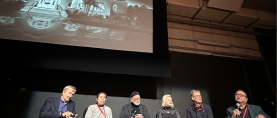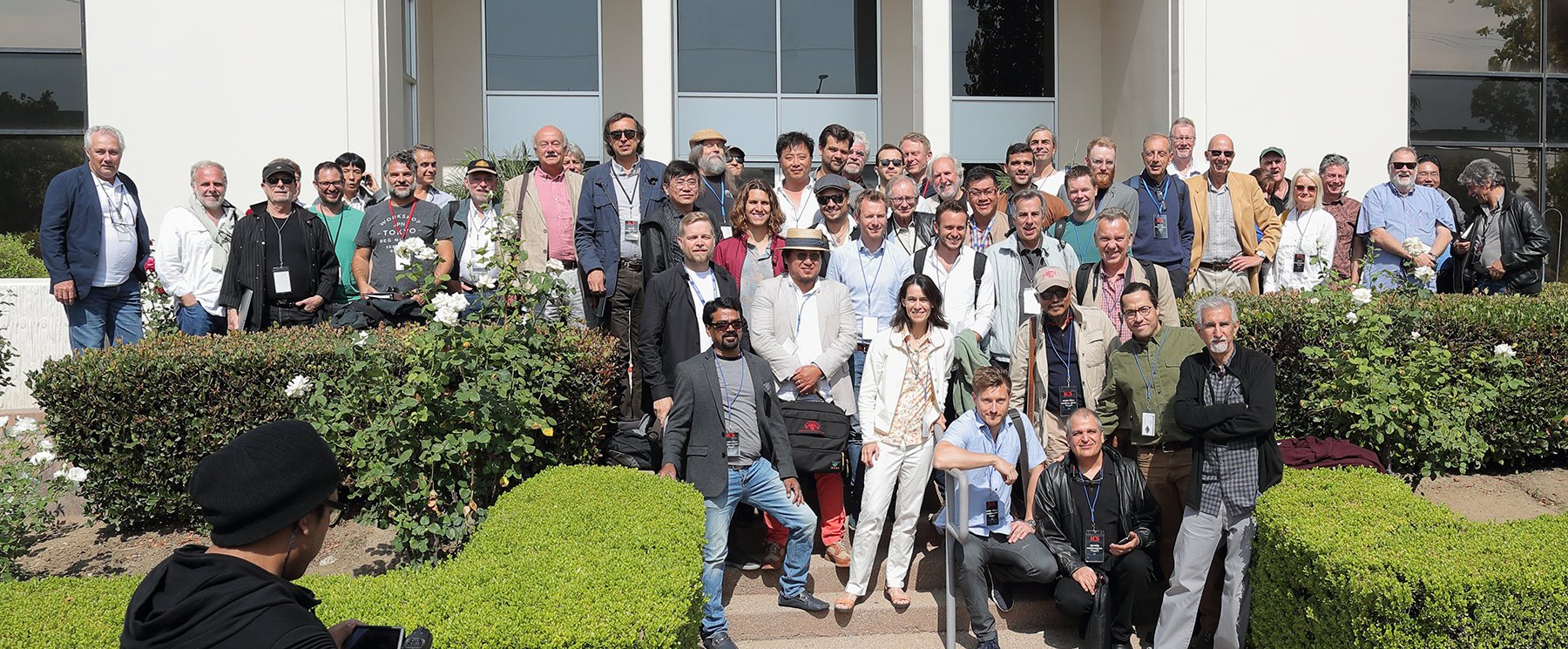
ICS 2016 – Part IX: Panavision and How Optics Influence the Aesthetic
The International Cinematography Summit offered a unique opportunity for motion picture professionals to discuss and demonstrate ideas.
ICS 2016
For this unique four-day event, the American Society of Cinematographers invited peers from around the world to meet in Los Angeles, where they would discuss professional and technological issues and help define how cinematographers can maintain the quality and artistic integrity of the images they create.
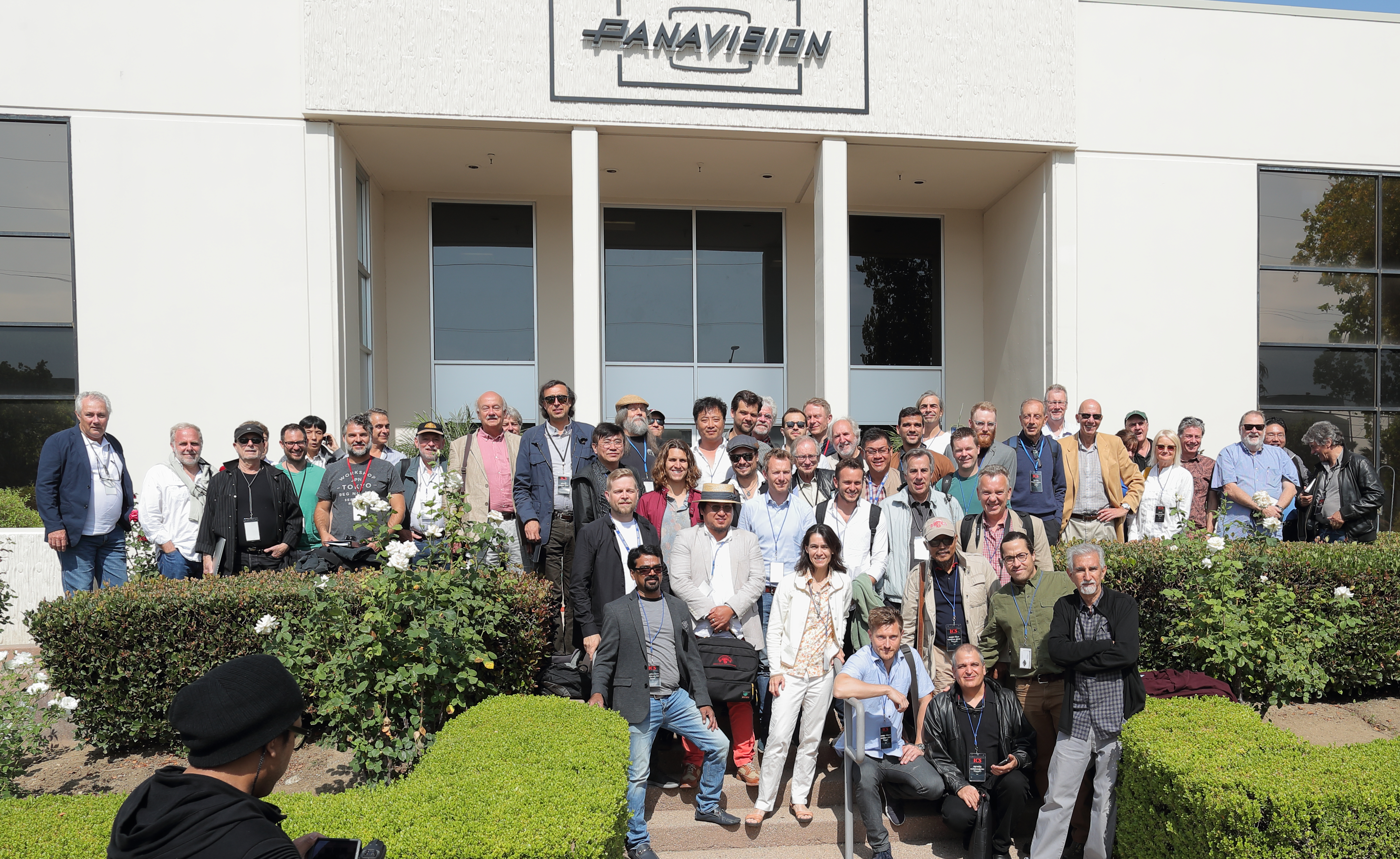
On this day of the International Cinematography Summit (ICS), a phalanx of participants from far-flung locales ventured from the ASC Clubhouse in Hollywood to Panavision’s sleek headquarters in Woodland Hills to catch a glimpse of the past, present and future of image capture. A line from Charles Dickens’ “Tale of Two Cities” was paraphrased as the day’s theme — this being “the best of times and the worst of times.”
The “best” was represented by the fact that there are more choices than ever in terms of tools for the cinematographer; the “worst” could might be summed up in the same way, leading to what might be construed as a bewildering array of options at a time when technology is advancing at an almost alarming rate. Or, as Michael Cioni, president and Millennium Digital XL camera product director at Light Iron, put it: “Here today, gone today.”
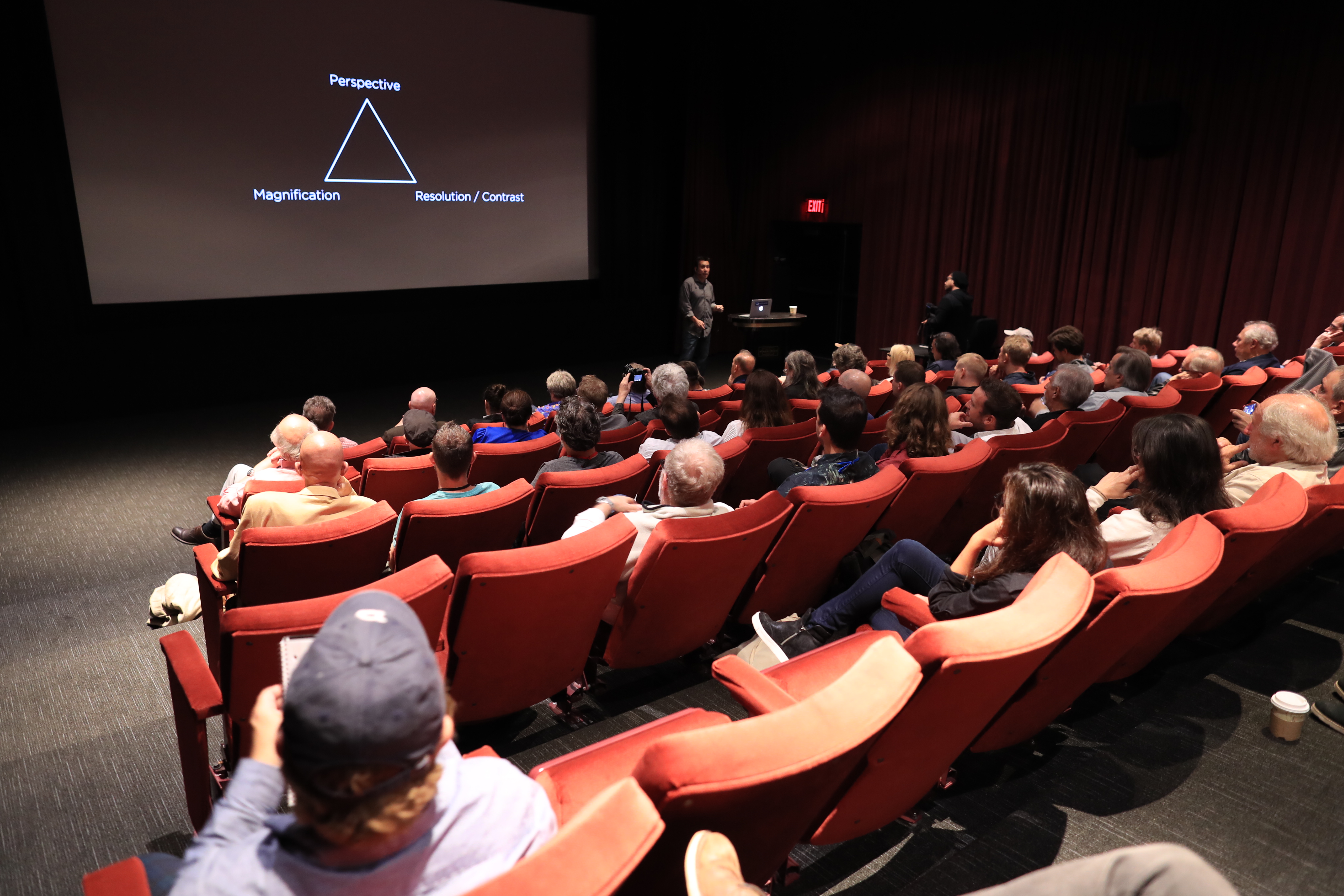
But Dan Sasaki, Panavision’s Vice President of Optical Engineering — sometimes called the “Wizard of Optics” — chose to accentuate the positive. “There’s a unique opportunity in optics that we’ve never had before, and through the choice of different types of lenses, and different types of sensors, you’re going to get the greatest type of control you’ve ever had,” Sasaki explained during a PowerPoint presentation conducted for the ICS at Panavision’s Tak Miyagishima Theater. “In fact, it’s so strong that you’re going to be able to create a defining look that’s going to be able to survive the entire imaging chain.”
In other words, the original vision created by the director and cinematographer has a greater probability of being preserved intact through postproduction.
Sasaki seized the opportunity to cover a wide range of topics, from how optics influence the aesthetic in general to the unique properties of anamorphic — which he broke down into “The Five Pillars of Anamorphic” — and even what he called the Foundations of Imaging: Perspective, Magnification, and Resolution and Contrast. (All subjects he tackles in videos found on Panavision's recently launched Panalab online learning resource.)
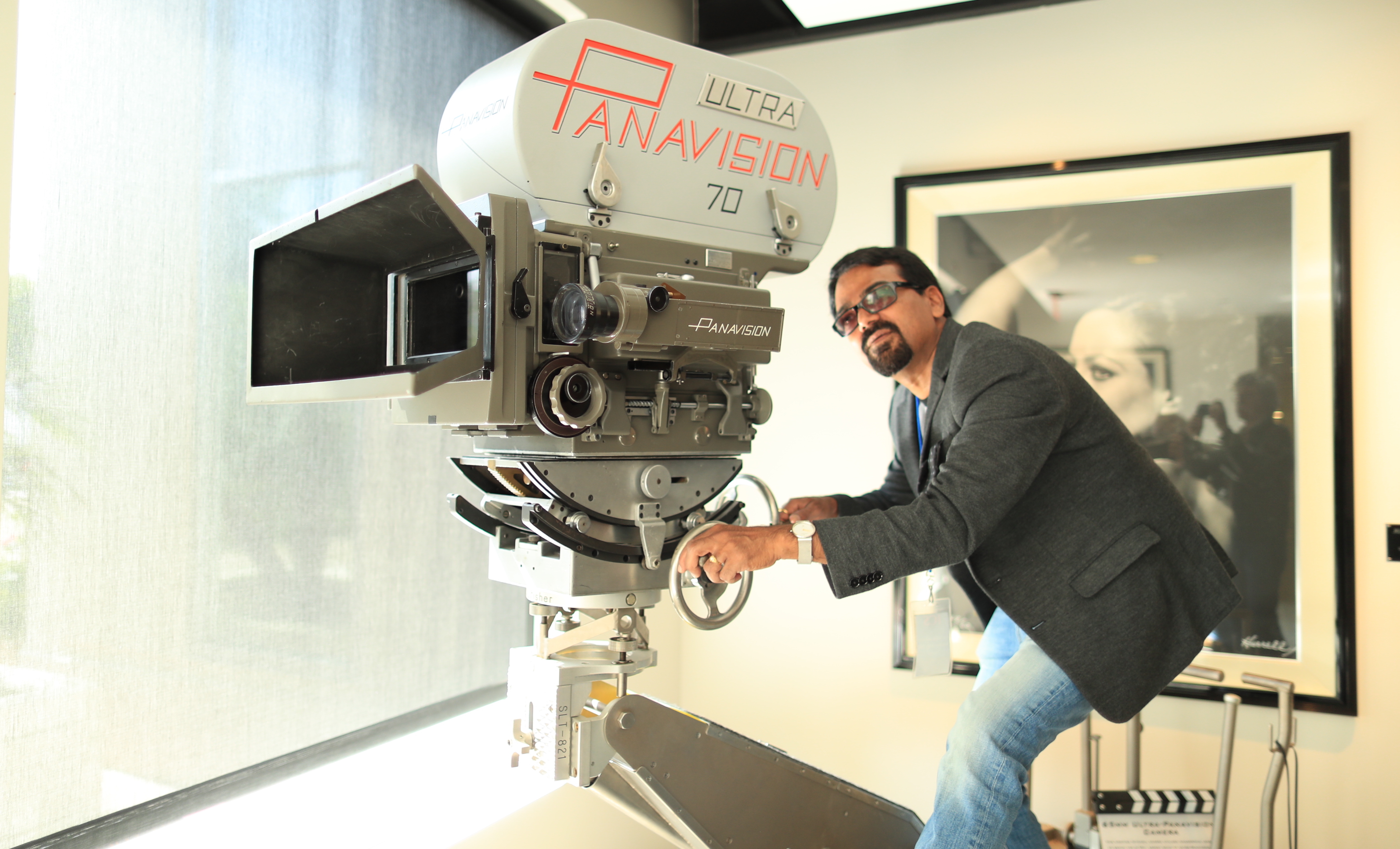
One key point made during the presentation is that in this age of super-sized sensors and large-format lenses, resolution should not be easily confused with sharpness. “As we get to the larger sensors with a great amount of resolution, we find that lenses don’t have to be tack-sharp,” explained Sasaki. “Unfortunately, a lot of lens designers of today are designing lenses by computer, and their goal is to make the most perfect lens. And we all know that this is the art and science of motion pictures, not just the science. We’re not trying to build lenses for lithography or making microchips. We’re trying to make lenses [for images] to look beautiful. I know I’m not Tom Cruise, but when I get photographed, I don’t like it when every pore or every pimple shows up, and certainly neither do your actors or actresses.”
Not to state the obvious, Sasaki added that resolution is one of the cinematographer’s greatest allies. “You can create a better transition between your foreground and background, you can actually control the amount of softness between the foreground and background — something you cannot stretch out in postproduction. This is your ultimate tool of control that’s going to survive the imaging chain.”
In talking about Panavision's new 8K Millennium Digital XL camera and the company's array of large-format lenses, Cioni made the case that digital can do everything film can do, but better.
“Up until today, the world has been on 35mm film for a very long time, basically through the 1980s and on,” Cioni told American Cinematographer following the presentation. “In the 1950s and ’60s there were a lot of large-format options. When I was in film school, that’s what we’d celebrate. Then that went away. We can bring it back now — but it’s not going to come back on a celluloid medium.”

Cioni pointed out that the Millennium Digital XL helps producers get past the issue of large-format production being cost-prohibitive for most users. “Even though there are the Quentin Tarantinos and the Christopher Nolans who are able to make large-format work on film, which is fantastic — especially since they’re Panavision customers — more cinematographers want to have access to large-format systems,” Cioni explained. “And that’s the fundamental difference. This isn’t just a new high-res camera, it’s a large format sensor. It has the Ansel Adams [deep focus] effect in the images, which doesn’t look like 35mm, and we now can make that achievable to all cinematographers because we’re putting it in an available digital camera.”
Another compelling point during the afternoon was the idea that cinematographers aren’t necessarily interested in capturing reality in the most accurate fashion, but want to make it more cinematic, particularly when it comes to color.
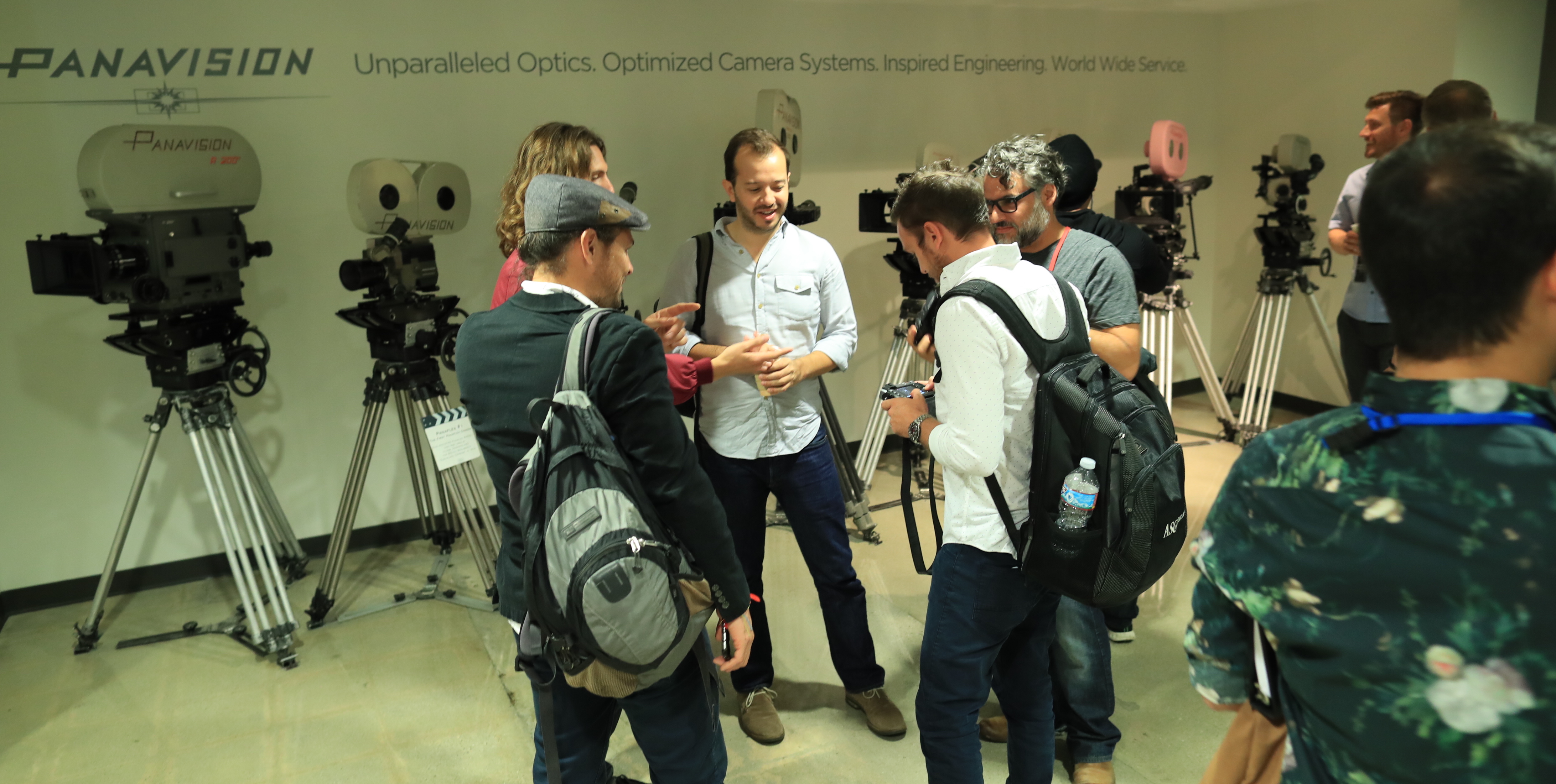
“There was a school of thought for a while in digital production that the goal was to replicate colors as they exist in nature,” Cioni told AC. “I call that the ‘fruit-bowl’ test. Camera companies would put a fruit bowl on the table and they would look at it with their eye and they’d tune the cameras to replicate that fruit bowl electronically exactly as they saw it. That makes a lot of logical sense, but moviegoers don’t go to movies to see nature, they want to see it fantastic. And Kodak is actually a great example of this because they made film stocks with style. They were trying to create a look. And of course our lenses do the same thing. They don’t look natural; they have a style to them.”
Added Sasaki: “We have a unique visual system that creates that feeling of depth and something that’s more artistic. And what Michael said is that we don’t want to create something that’s perfectly representative one to one of what we see in nature. This is an art form, we want to actually take what we see naturally and translate it into something that’s a little bit more beautiful or a little bit different. So we can create a look of sterility, if you want that, or something that’s surreal by using, for instance, an anamorphic lens.”
In terms of keeping up with the pace of technology, Cioni pointed to the Millennium Digital XL’s cutting-edge construction, with its external, interchangeable modular components. “So that as we upgrade, and the market changes and fads come and go, we don’t have to rebuild a whole camera, we can just change the outside,” he said. “Everything on the outside is open boards. That gives us more future protection and allows users to give us really clever feedback, then we don’t have to go back to the drawing board. We can just isolate it to one little part, build that one part, screw it on, and we’re good to go. It doesn’t require the entire engineering team to change direction.”
As Cioni explained, the DXL is the result of a team effort between Panavision, which is responsible for the optics, the ergonomics and accessories; Panavision subsidiary and post house Light Iron, which handles the color science, data management and archiving; and RED, which is the sensor developer and provides the camera’s computer. “So it’s really a picture of production, electronics and post in harmony,” he added.
As for our rapidly changing times and the intimidation that can result, especially for veteran cinematographers who have spent decades working in the film space, Sasaki cautioned users to not let new technologies deter or scare them. “It’s very tempting for people or even charlatans to say things that aren’t true or promote the wrong technology,” he explained. “And sometimes that creates a fear or paranoia. What you want to do is reset yourself. What cinematographers have been doing traditionally has always been correct, even back in the 1800s, and those techniques still represent a very strong foundation of how to shoot something.
“For instance, if you’re given a five-gallon bucket of technology, you don’t have to fill it to the top every time. Fill it up to a gallon if you feel it’s appropriate. But sometimes (DPs) get pushed into thinking they have to use all this technology. I say use your gut instinct.”


